Recent Articles
Popular Makes
Body Types
10 Best European Hybrid and Electric Cars
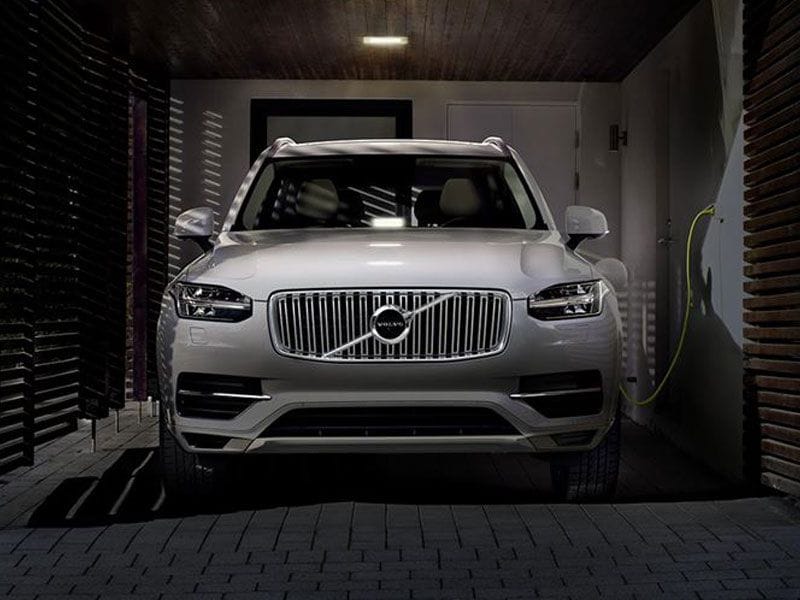
Volvo XC90 Plug in hybrid ・ Photo by Volvo
These 10 European hybrid and electric cars are not necessarily great ways to save money on gasoline. The extra initial costs involved, compared with buying an equivalent that relies on internal combustion alone, would take a lot of miles before the books started to balance (as long as gas prices don’t multiply by a scary amount). But these choices do represent a way of having useful power while keeping emissions down. If we’re leaving a cleaner environment for our children and grandchildren, then why quibble over cash? And we’re concentrating on European models here because they’re more fun. Yes, that’s arguable and subjective, but let’s be honest — when was the last time anyone had a hoot in a Prius?
2017 Audi A3 Sportback E-tron
Here is a car with several great qualities. It’s a practical compact hatchback, contains Audi’s premium appointments and deploys a plug-in hybrid drivetrain. A considerable 204 horsepower and 258 lb-ft of torque drives the front wheels courtesy of a turbocharged 1.4-liter engine and an electric motor powered by a lithium-ion battery. In full electric mode, this car can cover 16 miles, while the EPA estimates 83 MPGe. Even when EV mode is taken out of the equation, we’re still looking at 33 MPG city, 37 MPG highway and 35 MPG combined. A 240-volt charger will replenish the battery in 2.5 hours.
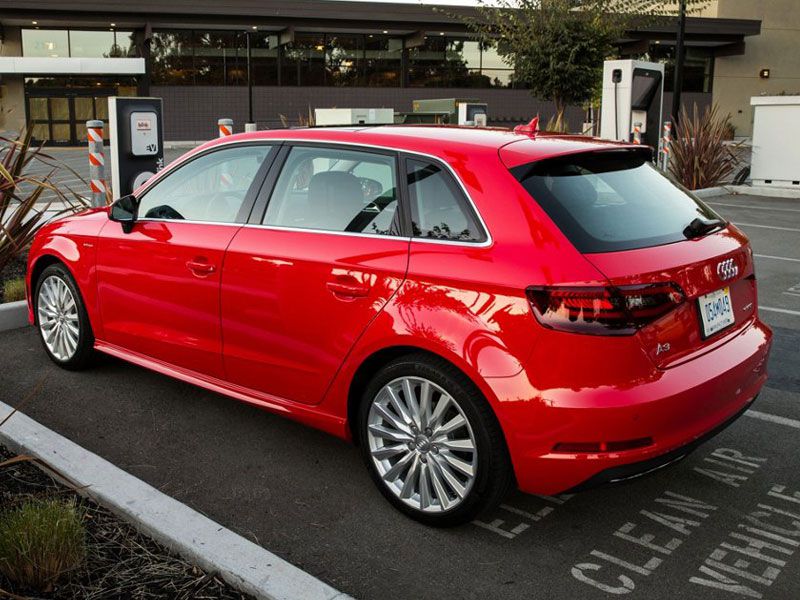
Photo by Audi
2017 BMW i3
The i3 is not a regular car that just happens to be fitted with an electric motor and battery. It was designed to be different, with an aluminum tub under a carbon fiber body (weight is the enemy of energy). The interior uses sustainable materials. Range is 81 miles (a 2017 update should bring that to 114 miles), a 240-volt charger needs just four hours for a full top-up, and the electric motor sends 170 horsepower and 184 lb-ft of torque to the rear wheels at a rate of 124 MPGe. A range extender (a 600 cc flat twin engine from BMW’s motorcycle division acting as an on-board generator) is optional.
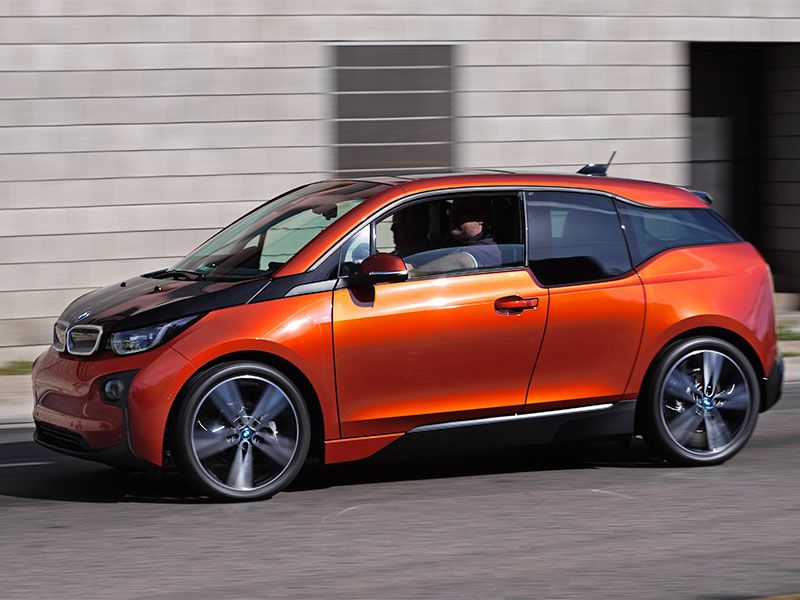
Photo by BMW
2017 BMW X5 xDrive40e
This list of 10 European hybrid and electric cars will include a couple of double entries from one manufacturer, because they’re too interesting to ignore. As well as the radical i3, this plug-in hybrid version of the X5 premium crossover is another of BMW’s efforts to cut emissions. The advantage here is that while an electric vehicle is great as a second car, a plug-in hybrid can be an only car. The xDrive40e’s range in electric mode is 14 miles, the best charging time is under three hours, and the EPA reckons it can achieve 56 MPGe. That’s impressive for an all-whee drive crossover SUV with a maximum of 72.5 cubic feet of cargo space.
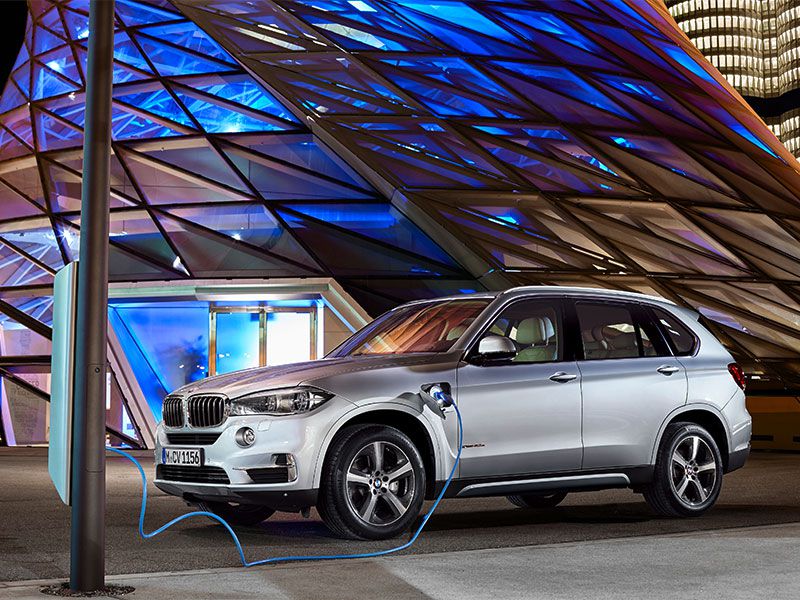
Photo by BMW
2017 Fiat 500e
Upsides: the 500e is characterful, quick and quiet. Downside: it’s only available in California and Oregon. This is an ideal city car, perfect for darting through traffic and fitting into tight parking spaces. It’s also affordable. Maximum range is 84 miles and a 240-volt unit can perform a full recharge in under four hours, while the average miles per gallon equivalent is calculated at 116 MPGe. However, this is a small car to begin with and the 500e’s rear space is reduced even more because of the need to accommodate a lithium-ion battery pack. There is a positive, though. That pack lowers the center of gravity, making this one of the best-handling Fiat 500 variants.
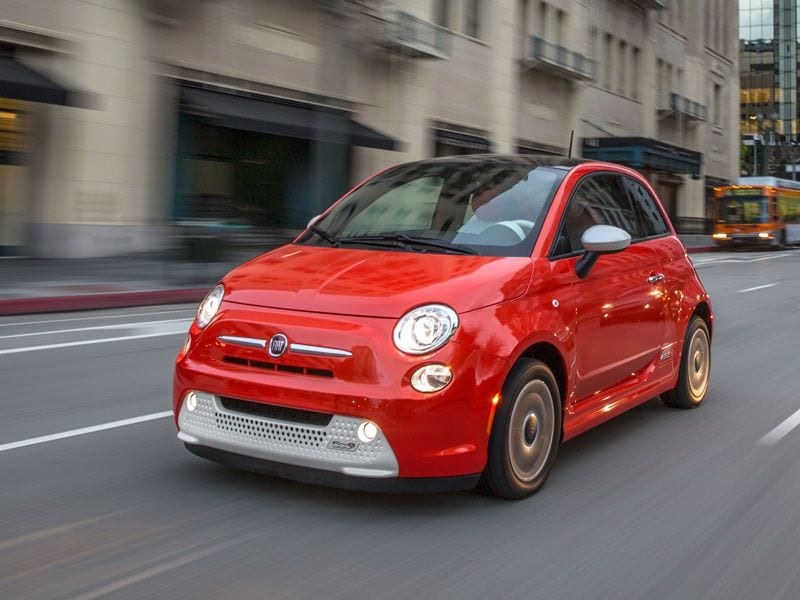
Photo by Fiat Chrysler Automobiles
2017 Mercedes-Benz B250e
This is the only version of the B-Class (a kind of largish compact hatchback with an elevated ride height) that Mercedes-Benz brings into the United States. The interior is suitably upscale, while an electric motor propels the front wheels with 177 horsepower and 251 lb-ft of torque. A full charge delivers around 87 miles of range. Replenishing the battery takes 3.5 hours with a 240-volt charging station, but it’s almost 10 times as long with a domestic outlet. The EPA puts the combined miles per gallon equivalent at 84 MPGe. Like many other electric vehicles, the B250e has limited availability, usually the states on either coast.

Photo by Mercedes-Benz
2017 Mercedes-Benz S550e
Even without any plug-in hybrid hardware, the current S-Class is a technological marvel. Massaging seats and a fragranced ionized air system join an adaptive air suspension that can set itself up for the road ahead, plus many state-of-the-art safety features. Yet this version can also average 56 MPGe, run for 12 miles in EV mode and recharge in 2.5 hours. It loses a significant amount of trunk space compared with the regular S-Class, leaving 9.45 cubic feet. But if that’s not a deal-breaker, a low-emissions version of one of the finest automobiles in the world sounds like a tempting prospect.
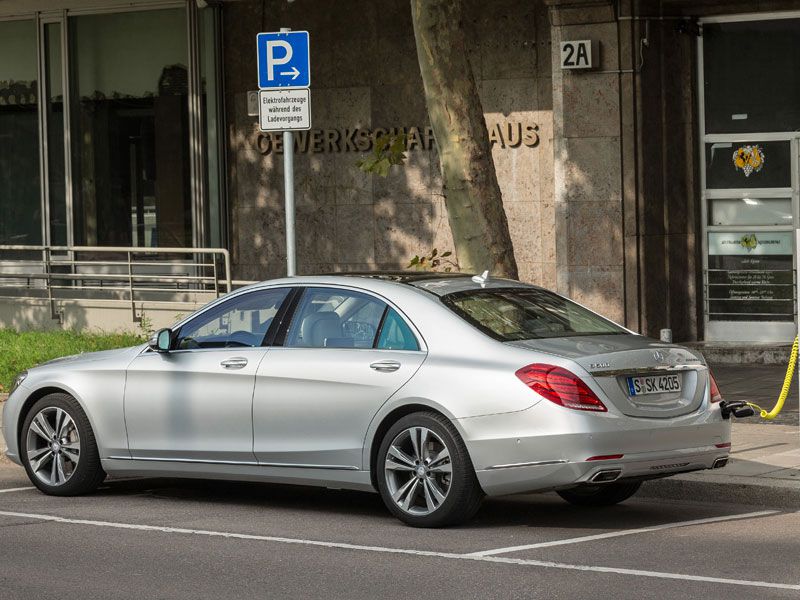
Photo by Mercedes-Benz
2017 Porsche Cayenne S E-Hybrid
Porsche was one of the first companies to incorporate a “coasting” mode (in the previous-generation Cayenne hybrid); it’s a way of recharging the battery on long downhill stretches and not using the engine. Things have since evolved to this, the Cayenne S E-Hybrid, which is of the plug-in variety. The whole drivetrain delivers a hefty 416 horsepower and 435 lb-ft of torque, allowing this large all-wheel drive luxury SUV to sprint from standstill to 60 mph in just 5.4 seconds, while averaging around 47 MPGe. It can run for 22 miles in electric-only mode and a full recharge need only take 1.3 hours.
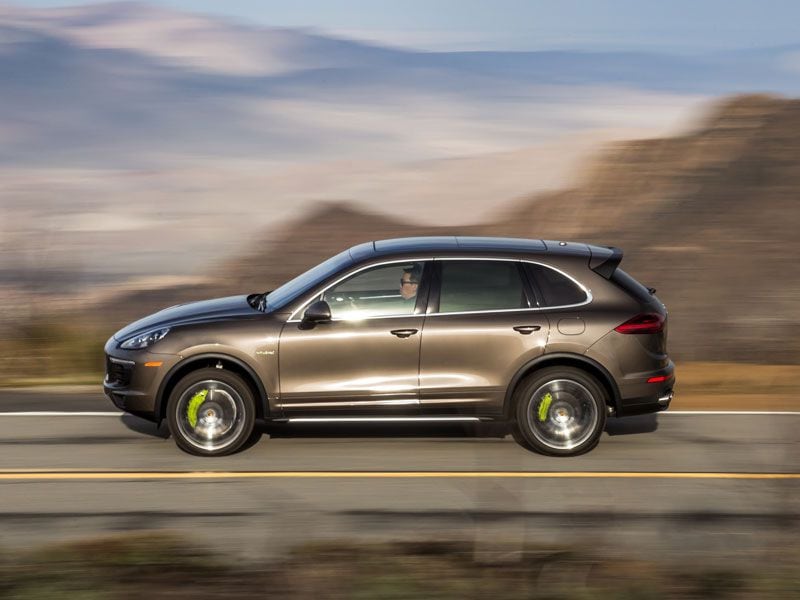
Photo by Porsche
2017 smart Electric Drive
The 2-seater smart fortwo is a sub-subcompact with a rear-mounted engine driving the rear wheels. A second generation debuted last year and now there’s a new battery powered version. Interestingly, the electric drivetrain is available with both the hard top and cabriolet body styles, making this the only open-top electric vehicle on the market when it goes on sale in the summer of 2017 (the hard top arrives earlier in the year). The relevant numbers are: 99 miles of range; 80 horsepower; 118 lb-ft of torque; 2.5 hours charge time. There are no EPA figures yet, but the smart is really light, which will help its cause.
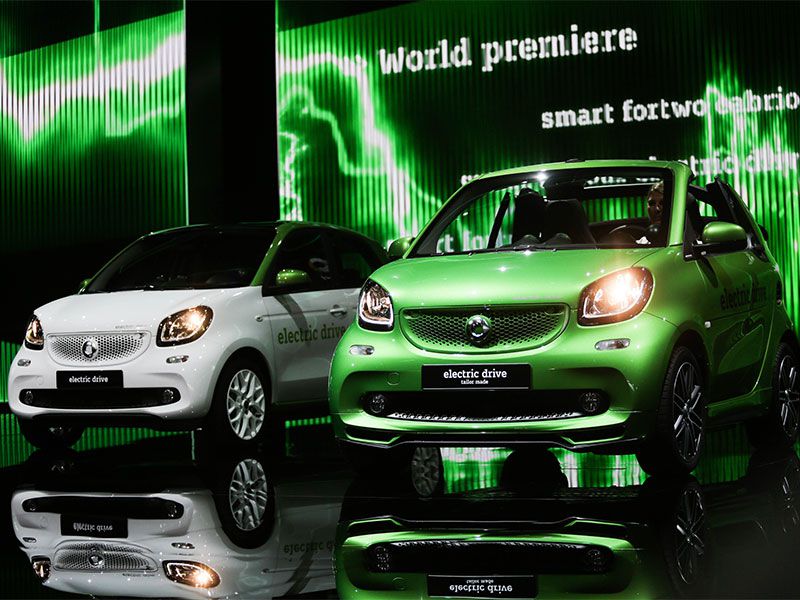
Photo by Daimler Media
2017 Volkswagen e-Golf
The e-Golf has the space, style, poise and class of the regular Golf, but uses battery power only. Right now, total range is 83 miles (about average for electric vehicles). But VW plans an upgrade for the 2017 model year, pushing that figure to around 125 miles. Considering range anxiety has been a hindrance to electric vehicle ownership, this improvement could be a deciding factor. The front wheels are driven by 115 horsepower and 199 lb-ft of torque, and the EPA combined estimate is 116 MPGe. Charging time with a 240-volt/3.6-kilowatt unit (SE trim) is seven hours; SEL Premium brings a 7.2-kilowatt charger for a 4-hour top-up or 80 percent in 30 minutes with a fast-charge mode.
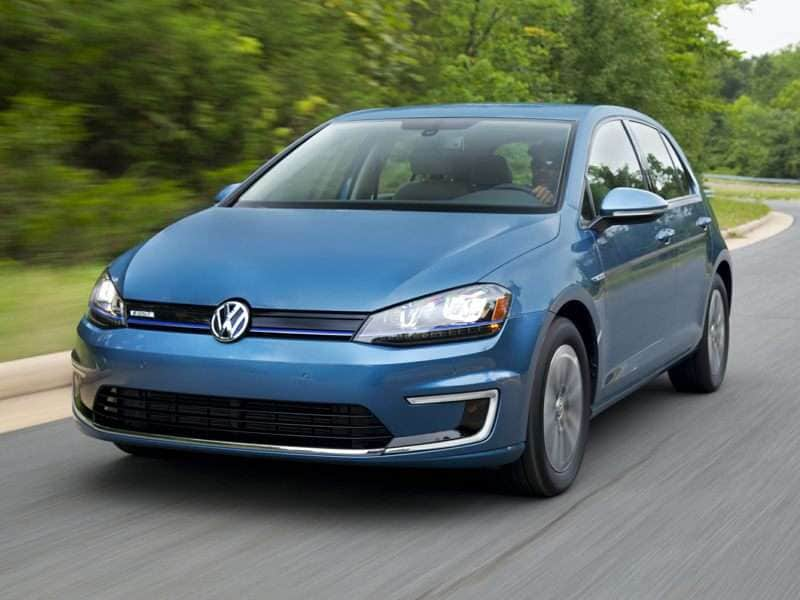
Photo by Volkswagen
2017 Volvo XC90 T8 Twin Engine
This Volvo plug-in hybrid has a combustion engine that is both turbocharged and supercharged. An all-wheel drive system is fitted, but it runs in rear-wheel drive when using just battery power — which extends to 13 miles. Clever stuff, but made even smarter by not having to compromise cargo space whatsoever or ditch the third row of seating (it was always meant to accommodate the necessary hardware), making the XC90 T8 currently the only plug-in hybrid SUV with seating for seven. Connect it to a 240-volt source and recharging takes 2.5 hours; combined fuel consumption is 53 MPGe. This is also a handsome, luxurious ride packed to the gills with safety features, many as standard equipment.
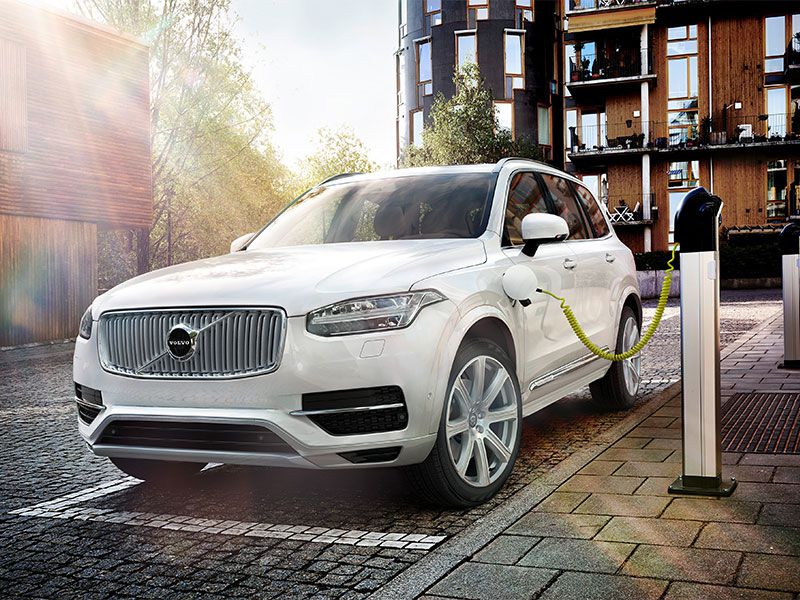
Photo by Volvo